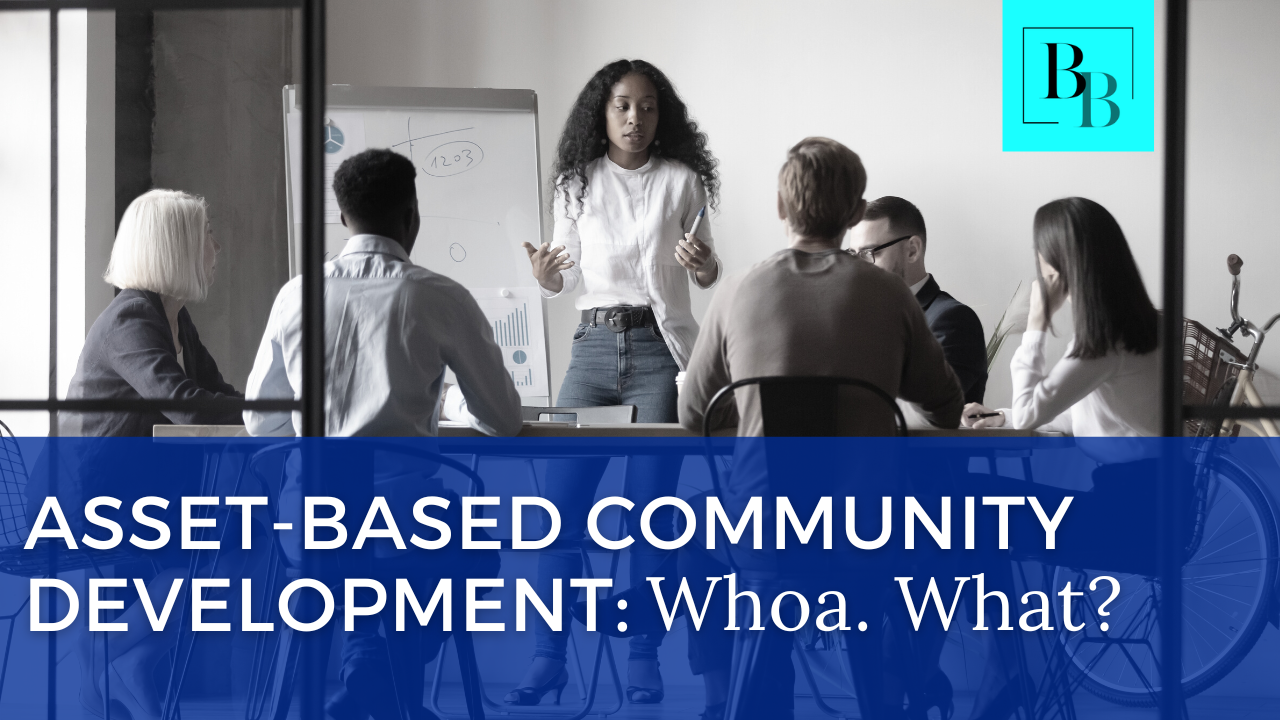Asset-Based Community Development: Whoa. What?
Nov 14, 2022
Your not-for-profit organization is not in the business of the arts or culture, of health services or libraries, of student government or education.
It is in the business of community development – leveraging your assets to improve the quality of experience of people who live and work in your community.
Now, how you define “community” will vary by agency. For some, it is a membership, for some a clientele, for some an entire municipality or even broader. By whatever definition, though, you want to make things better, by adding and leveraging your unique contribution. The days of silos and single-agency resolution of community issues are long gone.
Improving the Quality of Life in Your Community - Making the Abstract More Concrete
 One approach to making the abstract more concrete is to look at and discuss the potential of “Asset-Based Community Development”, a term coined by researchers Jody Kretzmann and John McKnight. It is both a strategy and a mindset that focuses on identifying and mobilizing existing, but often unrecognized assets for sustainable community development. It is a relationship-driven, capacity-focused, “glass half-full” approach.
One approach to making the abstract more concrete is to look at and discuss the potential of “Asset-Based Community Development”, a term coined by researchers Jody Kretzmann and John McKnight. It is both a strategy and a mindset that focuses on identifying and mobilizing existing, but often unrecognized assets for sustainable community development. It is a relationship-driven, capacity-focused, “glass half-full” approach.
Who else needs to read this? Share this article with your friends and colleagues!
Examples of community assets might include:
- individuals (we each bring gifts to the table);
- associations (there is power in groups organized around common interests);
- institutions (government, business, schools – all valuable resources and potential allies);
- place-based assets (land, buildings, spaces);
- and even community connections.
This is sometimes referred to as asset mapping.
So, what is the goal of asset mapping?
Well, you want to document your community's existing resources, incorporating these positive assets and community strengths into your strategic work. You can then see how to tackle a “liability” or needed service area, in concert with others, for greater impact.
Asset mapping is a systematic process of identifying and cataloging key services, benefits, and resources within the community, such as individuals' skill sets, organizational resources, physical space, institutions, associations, and elements of the local economy.
Done well, asset mapping can help to uncover solutions and promote community involvement, ownership, and empowerment.
How does asset mapping work?
Here are four steps: setup and planning, identifying assets, data collection, mapping, and reporting. In other words, you need a plan.
There are many places to start but you might consider having one item on every agenda for “exploration” only.
Here are a few reflection questions to begin a discussion:
- What do we value most about our community?
- What are the strengths and assets of our community?
- What are our strengths and assets?
- How can we identify and mobilize these strengths and assets?
For a more complete overview of four key components of an asset-based community development process – resources, functions, methods, evaluation – take a look at the paper by the Asset-based Community Development Institute. You can download it here.
Next week we’ll provide a few more specific examples of asset-based approaches to youth development in your community.
Get on the Fast Track to Improving the Lives of Those Who Live and Work in Your Community
Online Training Programs with Ken Haycock
The Board Leader Academy:
A step-by-step guide to higher performance and impact.
 Our spotlight course is designed for CEOs/Executive Directors, Board Chairs, and those who are interested in leadership positions on not-for-profit, for-impact boards. Six weeks. Three brief video lessons with handouts per week (watch at your convenience) plus additional downloadable resources. 30-day money-back guarantee.
Our spotlight course is designed for CEOs/Executive Directors, Board Chairs, and those who are interested in leadership positions on not-for-profit, for-impact boards. Six weeks. Three brief video lessons with handouts per week (watch at your convenience) plus additional downloadable resources. 30-day money-back guarantee.
The Board Member 101:
Your accelerated path to competence and confidence.

In this one-month course, you will move from feeling reticent and tentative to competent and confident, asking good questions and making great contributions. The course complements and reinforces your on-site orientation and opens new channels of communication and discussion. Four weeks. Two brief video lessons (watch at your convenience) per week plus downloadable handouts. 30-day money-back guarantee.
P.S. May I ask a tiny favour? Would you mind sharing this blog with one person? I would love it. You can get more of our thoughts on Facebook and LinkedIn. Join our Facebook Group for Executive Directors and Board members: Governance as Leadership



